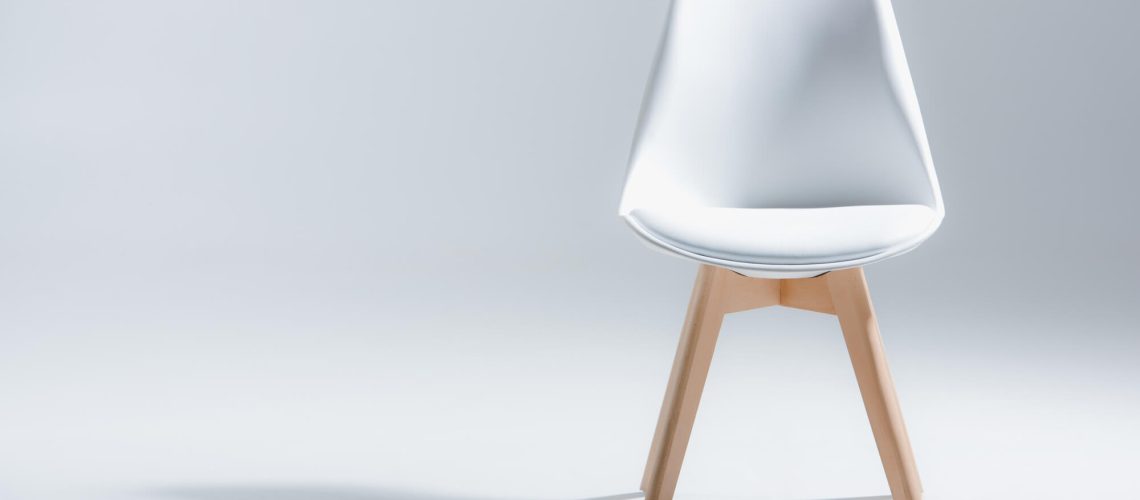Over the years, 3D printing has undergone continuous evolution. From initially printing small trinkets, we have now advanced to the point where we can make life-sized objects, including 3D print furniture. This advancement is particularly evident in the growth of 3D printing services in Toronto, Vancouver, and Calgary, where these services are playing a pivotal role in the furniture design sector.
While traditional furniture manufacturing processes remain the default choice, 3D printing offers a compelling alternative for makers seeking innovation in the market. It allows us to create designs that go beyond the capabilities of traditional materials—this is especially true for furniture.
In this article, we are going to share some amazing 3D printed furniture designs. We will also talk about some of the challenges faced by such big projects today.
The Challenges & Viability of 3D Printed Furniture
As we delve into the realm of 3D printing furniture, it’s important to recognize the challenges that may raise doubts about the viability of this technology. Of course, these challenges should not deter us from reshaping our understanding of how we conceptualize and create living spaces.
To gain a comprehensive perspective, let’s examine the strengths and weaknesses of both traditional and 3D printed furniture. This way, we can instead envision how 3D printing can offer solutions to the constraints of traditional manufacturing.
Durability and strength
A lot of people may say that the most durable materials are metal and wood. However, gone are the days when 3D printed products are viewed as flimsy. Recent technological advancements in 3D printing have introduced the use of durable materials like high-performance resins and carbon fiber-infused polymers.
These materials not only rival the strength of their traditional counterparts but can also surpass them. The precision in the design and printing process of 3D furniture, facilitated by the layering approach, offers a level of uniformity that traditional manufacturing struggles to achieve.
Take woodworking as an example. One cannot ensure that the nails are uniformly aligned with the legs of a table. With 3D printing, we simply incorporate the exact measurements into the software. Once printed, everything is balanced and where it should be. This minimizes room for human error, enhancing strength and durability.
Still, it’s important to acknowledge that there are limitations to the durability of 3D printing materials, preventing the creation of items like long-lasting beds, such as the case of printing the base of the bed. Since it is printed as a whole, the large area is prone to warping. It can be printed by parts, but this affects the structural integrity of the base. Nevertheless, we can successfully produce tables, sofas, and similar items.
Design complexity
Some people may think that the complexity of the design may compromise the functionality of the 3D printed furniture. The reality is that 3D printing furniture allows for intricate designs to go beyond traditional manufacturing.
For instance, we can 3D print interlocking pieces as well as design lightweight and heavy structures. The secret lies in our capabilities to design the layers accurately.
However, compared to the traditional process, 3D printing furniture requires a lot of trial and error—especially if we want to find the balance between the complexity of design and functionality.
For example, we tried 3D printing a table before where the legs are designed like vines. We were ambitious with the design that we did not add a solid base at the center of the vines. The connectors between the tabletop and the legs were just curves and spirals.
As aesthetic as it looked after printing, the legs’ design could sadly not support the table. So, instead of changing the design and printing another table, we printed angled square supporters underneath the tabletop that can also be attached to the vine legs.
When we look back at our experiences, there’s no doubt that traditional manufacturing has an edge in design functionality. However, with 3D printing, we can find alternative solutions without compromising much on customizations—just like what we did to remedy the leg support of our 3D printed table.
Cost-effectiveness
A lot of people think that 3D printing is a luxury compared to the affordability of traditional manufacturing. But while this was the case in the early stages of 3D printing, 3D printing costs are now on a steady decline.
Investing in a 3D printer not only pays off initially but proves to be a lucrative decision throughout the entire furniture crafting process. The returns become evident when you take into account material costs and energy consumption. For example, users can strategically design an item’s layers to identify areas where they can save on materials.
Print customization
The level of personalization with 3D printing is unparalleled. There are limits to traditional manufacturing designs that only 3D printed products can produce.
For instance, traditional manufacturing is hindered by size constraints. With 3D printing, we can customize the dimensions of the design and the properties of the material. We can even specifically design for a rigid material or tailor-fit the design if we want to work with a lightweight material.
This flexibility grants designers the freedom to adapt to current spatial needs, unlocking new creative possibilities.
However, remember that the more we customize our designs, the longer it takes for us to produce them as well. Unlike traditional manufacturing, which excels in quick and large-scale production of standardized furniture, the advantage of 3D customization primarily lies in aesthetic considerations and not labor efficiency.
Moreover, we still have a long way to go in terms of the molding processes of 3D printing. An example of this is the smooth finish traditional molding processes offer. Molding demands materials with specific properties for durability and flexibility, and while 3D printing offers a variety of materials, they aren’t inherently designed to be perfectly molded. In three to four years, there could be advancements in this regard.
Great 3D Print Furniture Designs
Are you ready to design your 3D furniture? We have some 3D furniture design suggestions that you can use as inspiration. Do not be afraid to experiment or request different materials.
It does not mean that we just stick to 3D printing materials when we want to 3D print furniture. Mixing traditional materials like wood or even glass can elevate the look and functionality of your 3D printed furniture. Let’s take a look.
Accent Chair
In Milan Design Week of 2018, Nagami shared with the world its 3D printed chair. The design was inspired by the flow of the waves, so it looks like it is moving. It is a timeless yet unique design that can bring life to a monochromatic modern space.
Despite its intricate design, it’s super lightweight with a 6mm thickness. They used an FDM 3D printer, and the material is plastic polymers. They used both pellets and filaments.
By the way, you can do a variation of this design by shortening the height and adding more angular curves. This variation in design will work well in more traditional interior designs.
Stools
You can also design a 3D printed stool with polymer filament for the base and a cushion for the seat. The more popular designs are geometric, like this one from Ocke.
If you want a simpler design that’s easier to print, you can just do a layered rectangle design. It should look like a solid inverted rectangle when printed. You can choose to airbrush it with neon colors, and it is amazing for modern bars. Additionally, you can customize the seating design by adding empty spots for aesthetic appeal. If you want to add a cushion, make sure to allot space for latches in the design.
Benches
3D printed benches are perfect for outdoor use. The material will not rust or rot. You just have to take extra precautions when it is out in the intense heat of the sun. For this, designers often experiment with high-temperature polymers like Ultem, PEEK-CF, or PEKK. These materials are durable and better to use for outdoor furniture.
For the design, you can create a rattan-like model like the one from Jane Kyttanen. You just have to be mindful of the curves of the seating that meet your layers at the base. Make sure there are a lot of layers at the base for support.
Another suggestion is a crushed cardboard design like the XXX Bench of Print Your City. This design offers more stability and support for the base. As the base is solid, you have more wiggle room for creativity on the sides of the bench.
End Table
We mentioned earlier that it is also a good idea to combine 3D materials with traditional materials. This technique is best practiced with 3D print end tables.
It is more aesthetically pleasing and functional to use 3D printed material for the legs of the table. As for the top, you can use glass, metal, or wood.
The popular designs are still geometric graphics and legs that resemble corals or sand dunes. This is because, with a flaring open design at the top, it is easier to just put glass on top. This is the case with the end table of NYXO Studio.
Alternatively, you can choose to have hollowed tips for the top while sticking with a circular base. This will be a great design option if you want to glue wood at the top, which is the basis of the design of Aleksa Studio. This time, the 3D printed and traditional materials look like they were printed as one.
Dining Set
It is no small ordeal to 3D print an entire dining set. However, with a lot of patience, it can be done. You can experiment or request circular shapes, especially when the top of the table is covered with wood. This provides a soft contrast to the otherwise hard edges of the wood. Your dining table will not only look like a piece of art, but you also no longer have to worry about bumping your legs on angular edges.
You can do a shallow swoop for the seating of the dining chairs, so you do not have to take into account cushioning. In fact, such is the case with the design of Model No.
You can even choose to use materials that resemble wood to achieve a classic look—there are plant-based resins and also biodegradable polyesters that have fine wood dust in them. These usually come in pellet form, which is fed to a large-scale 3D printer. What comes out is a paste that can be bonded with other 3D printed layers.
What’s even cooler is that you can allocate space on the base of the table for the table chairs. This design is not only stylish but also functional, especially for people living in small spaces.
Conclusion
3D printing furniture can reshape the way we interact and perceive our living spaces. The challenges that question the viability of 3D printed furniture can be overcome by using the right materials and designing for functionality.
The furniture that we can 3D print now is just the tip of the iceberg. With our creativity and design possibilities with 3D printing, we can revolutionize the furniture industry.

